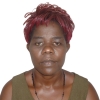Tessa Laing
ID:
|
Community responses to processes of land acquisition and resource management for conservation in Uganda
REFNo: SS372ES
The objective of this research is to explore the dynamics that enable local land users in areas bordering protected areas across northern Uganda to collectively influence land acquisition and conservation management processes. As highlighted in a number of recent scholarly review articles, insufficient attention has been given to ‘responses from below’ to land acquisition processes (Boras & Franco, 2013; Hall et al, 2015). While scholars have focused on ‘celebrity conservation cases’ in eastern and south-western Uganda such as communities affected by Mount Elgon and Queen Elizabeth National Park, less attention has been paid to community responses to conservation development in northern Uganda and established protected areas such as Kidepo and Murchison national parks. Community – conservation dynamics amongst populations living in close proximity to smaller forest and wildlife reserves such as Otze and Matheniko have received even less scholarly attention. This research aims to contribute toward such gaps, by focusing on responses to land acquisition for conservation ‘from below’ by communities living adjacent to lesser known conservation areas in northern Uganda.
Accordingly, the objectives of this research are to:
a) Examine how land acquisition processes and resource management for conservation are initiated and evolve in cases in northern Uganda
b) Examine how collective responses emerge; and
c) Understand the effect collective responses have on land acquisition processes, community development, and conservation outcomes in northern Uganda.
Field research will be undertaken amongst communities living adjacent to or near protected areas, not within the protected areas themselves.
|
New Zealand |
2019-11-19 |
2022-11-19 |
Social Science and Humanities |
|
Degree Award |

|
Jose Saenz
ID:
|
Helicobacter pylori and chronic dyspepsia in eastern Uganda
REFNo: HS305ES
1) Determine the prevalence of dyspepsia and Helicobacter pylori (Hp) infection among residents in a rural community in Eastern Uganda using non-invasive diagnostic means (questionnaire, fecal Hp antigen testing).
2) Correlate dyspepsia with prevalent symptoms identified from questionnaire and results from fecal Hp antigen testing.
3) Identify additional factors associated with dyspepsia using a thorough medical and dietary history.
4) Assess efficacy of Hp eradication following standard-of-care antibiotic treatment of all participants with active Hp infection.
5) Assess efficacy of empiric omeprazole treatment in participants with chronic dyspepsia who are negative for Hp by fecal Hp antigen testing.
|
USA |
2019-10-31 |
2022-10-31 |
Medical and Health Sciences |
|
Non-degree Award |

|
Lotte Meinert
ID:
|
Imagining Gender Futures in Uganda (IMAGENU) Project
REFNo: SS301ES
The overall purpose of this project is to enhance research capacity by generating new knowledge about how changing patterns of gender partnerships relate to livelihood, education, and reproductive and mental health. This will contribute to the development of relevant social gender policies, and create debate in the wider public.
The specific objectives are to explore the following research questions, which constitute Work Packages.
1. How do men and women imagine futures of marriage and child filiation in light of current far reaching changes in patterns of partnership?
2. How are gendered livelihood possibilities affected by changes in partnership and child filiation?
3. How do patterns of gendered reproductive and mental health affect and reflect changing patterns of partnership?
4. How are changing partnership patterns related to education?
|
Denmark |
2019-10-31 |
2022-10-31 |
Social Science and Humanities |
|
Degree Award |

|
Prem Ramburuth
ID:
|
Empowerment in the Workplace: Women in Africa
REFNo: SS304ES
Objective of the study
There are several dimensions that highlight the importance of the study. The objective of this study is to facilitate deeper understanding of issues of gender bias in the workplace in a sample of countries in Africa, and in sectors where women do much of the work but receive the lowest levels of pay and the least recognition, which in turn results in financial constraints.
Specific objectives
1. To understand the place and importance of empowerment of women in the workplace.
2. To investigate the range of factors that could act as barriers to women’s inclusion and gender equity.
3. Identify areas for change and inform policy on women’s empowerment in both formal and informal economies.
|
Australia |
2019-10-31 |
2022-10-31 |
Social Science and Humanities |
|
Non-degree Award |

|
Dorsa Amir
ID:
|
Decision-making across cultures
REFNo: SS308ES
The aim of this study is to understand how children learn to make virtuous decisions – that making the right decision-- about resources and how children learn to invest cost and effort in resources that benefit the public community. We plan to determine how these behaviors develop and change with age and how they influence cooperation in children all over the world.
|
USA |
2019-10-31 |
2022-10-31 |
Social Science and Humanities |
|
Non-degree Award |

|
Grace Turyasingura
ID:
|
RNAseq, secretome and HIV infection analyses of foreskin epithelial cells upon exposure to cervicovaginal fluid from healthy vs. women with bacterial vaginosis.
REFNo: HS426ES
Primary Objective (Aim 1): Compare the gene expression and secretome profile of primary foreskin epithelial cells following exposure to CVF from normal vs. BV women.
Hypothesis: BV CVF will induce an elevated pro-inflammatory and pro-chemotactic response in foreskin epithelia compared to normal CVF.
 Endpoints: Global gene expression by RNAseq
Secretome profiling by Luminex
Secondary Objective (Aim 2): Assess whether HIV-1 can directly infect primary foreskin epithelial cells following exposure to CVF from women with or without BV.
Hypothesis: HIV will infect foreskin epithelial cells in the presence of HIV- enhancing seminal amyloids, in a manner enhanced by BV CVF.
Endpoints: Assess CCR5/CD4 expression in foreskin epithelial cells, and their susceptibility to productive infection by HIV-1, following exposure to BV-CVF vs. normal CVF.
|
Uganda |
2019-10-31 |
2022-10-31 |
Medical and Health Sciences |
|
Non-degree Award |

|
FLORENCE ANOBE KOMAKECH ANOBE
ID:
|
Sustainable WASH systems Concept One Uganda.
REFNo: SS341ES
1.To investigate factors leading to success or failure of PAYF tariff collection to incentivize preventive maintenance arrangements for sustaining hand pumps.
2.To assess the possible mechanisms of exclusion from water services that exist in communities where PAYF is implemented, and how PAYF either causes or addresses these exclusion mechanisms.
|
Uganda |
2019-10-31 |
2022-10-31 |
Social Science and Humanities |
|
Non-degree Award |

|
Emmanuel Mande
ID: UNCST-2023-R007045
|
TESTING MEDICINAL PLANTS IN UGANDA FOR LATENCY REVERSING ACTIVITY
REFNo: HS436ES
Primary objective: To prepare soluble extracts in water and hexane from 100 different recognized medicinal plant species growing in Mabira Forest of Central Uganda.
Secondary objectives: To test these extracts for HIV latency reversing activity
|
Uganda |
2019-10-31 |
2022-10-31 |
Medical and Health Sciences |
|
Non-degree Award |

|
Barbara Castelnuovo
ID: UNCST-2019-R000802
|
Diagnosis and treatment of non-communicable diseases and geriatric syndromes in the HIV aging population in sub-Saharan Africa.
REFNo: HS454ES
General objective.
The overall goal of the proposal is to improve capacity for detection and management of non-communicable diseases and geriatric syndromes in the aging HIV population in SSA.
Specific primary objectives
Specific Aim 1. To capture NCD endpoints and their risk factors: hypertension, cardio vascular disease (annual ECG screening), respiratory disease (peak flow meter screening and spirometry), renal disease (proteinuria and creatinine clearance), cancers (complete skin evaluation, pap smear, faecal occult blood, breast exam).
Specific Aim 2. To measure physical function using the Short Performance Physical Battery, muscle strength, (Gait speed and assessment of grip strength with handheld dynamometry), frailty phenotype, and history of falls.
Secondary objectives:
o To assess quality of life at baseline and year 1 and 2. To asses Quality of life we will use the WHOQOL-OLD (https://www.who.int/mental_health/publications/whoqol/en/). This module was developed after identifying gaps in the coverage of the standard WHOQOL-100 on aspects of QoL in older patients (29).
o To monitor medication regimens in all older patients, particularly medications that can contribute to inactivity, (e.g. sedatives), medications that cause electrolyte imbalances, and medications that slow reaction time or can interfere with balance and coordination. Polypharmacy will be defined as 5 or more drugs, beyond antiretroviral drugs, used in the same individuals for more than 4 weeks.
o To measure other geriatric syndromes (nutritional status, https://www.mna-elderly.com/; falls history https://www.sralab.org/rehabilitation-measures/history-falls-questionnaire?ID=1131) and urinary incontinence https://sagelink.ca/iciq-ui_short_form_giic) using standardized questionnaires
o To screen for depression using the People Health Questionnaires, PHQ-2 and PHQ-9, (which have been validated in our settings in HIV positive patients (30)), and treated accordingly.
o To assess disability using an HIV specific Instrumental Activities of Daily Living (IADL) tool which will be adapted from the one developed from the University of Toronto.
o To screen for dementia using the Montreal Cognitive Assessment (MoCA) https://www.mocatest.org/wp-content/uploads/2017/05/MoCA-8.3-English-Test-2018-04.pdf. As suggested by a validation study conducted in South Africa, mild cognitive impairment cut off will be lowered from 26 to 24 to take in account cultural differences [36]
|
Uganda |
2019-10-31 |
2022-10-31 |
Medical and Health Sciences |
|
Non-degree Award |

|
Andrew Gidudu
ID:
|
Mapping where women in Uganda go to access post- abortion care
REFNo: SS355ES
The overall aim is to gather vital information and map the existing safe, less safe and unsafe post abortion access points and the quality of validated providers who provide services within the law, and PAC service access points in the market, what they offer and where we can fill a service delivery gap. The specific objectives are;
i. To map the location of PAC providers in districts of Uganda where MSI operates centres and social franchisees;
ii. To understand the price of PAC and LAPM services provided in districts of Uganda where MSUG operates centres and social franchises
iii. To understand the safety and quality of PAC services provided in districts of Uganda where MSUG operates centres and social franchisees according to WHO’s safety standards categorize facilities as providing safe, less safe and least safe post-abortion services including mapping and collecting LA/PM pricing from post-abortion providers
|
Uganda |
2019-10-31 |
2022-10-31 |
Social Science and Humanities |
|
Non-degree Award |

|
Barbara Castelnuovo
ID: UNCST-2019-R000802
|
UNDERSTANDING THE ACCEPTABILITY AND USAGE OF SOFTWARE APPLICATION SYSTEMS DEVELOPED IN HOUSE AT THE INFECTIOUS DISEASES INSTITUTE
REFNo: SIR18ES
The general objective of this proposal is to determine the indicators collected in the IDI software as well as evaluate the functionality of the software systems built in-house at the Infectious Diseases Institute (IDI)
Specific objectives
1) To generate summary and descriptive statistics of the indicators collected using the IDI software (e.g. number and type of trainings organized, number of clients who had SMC by month)
2) To carry out periodic qualitative evaluation of the end user’s satisfaction in order to enable quality improvement of the IDI software
3) To identify the barriers to the usage of the various departmental software systems.
|
Uganda |
2019-10-31 |
2022-10-31 |
Engineering and Technology |
|
Non-degree Award |

|
Jacquellyn Nambi Ssanyu Nambi
ID: UNCST-2021-R011827
|
Evaluating the effect of empowered Community Health Clubs and a Community Scorecard on Sexual and Gender Based Violence in Mayuge District, Uganda: A quasi-experimental study
REFNo: HS457ES
1.To determine the proportion of women and men who have experienced some form of sexual and gender based violence (SGBV) in the last six months prior the study in Mayuge district.
2.To explore perceptions of community members towards SGBV in Mayuge district.
3.To understand the socio-cultural and economic factors contributing to SGBV in Mayuge district
4.To establish and empower Community health clubs (CHCs) to reduce SGBV in Mayuge district
5.To design and implement an SGBV Community Score Card (CSC) in Mayuge district
6.To determine effect of CHCs and the CSC on SGBV in Mayuge district
|
Uganda |
2019-10-31 |
2022-10-31 |
Medical and Health Sciences |
|
Non-degree Award |

|
Hilda Ikiriza
ID:
|
CHARACTERISATION, METABOLITE PROFILING AND MICROPROPAGATION OF INDIGENOUS DIOSCOREA
BULBIFERA VARIETIES IN UGANDA
REFNo: NS105ES
i. Establish the Genetic and agronomic variability of Dioscorea bulbifera germ plasm in Uganda
ii. Analyse the secondary Metabolite of antifertility of indigenous Dioscorea bulbfera accessions in Uganda
iii. Develop and validate protocol for Micro-propagation of indigenous Dioscorea bulbifera varieties for increased biomass yield
|
Uganda |
2019-10-31 |
2022-10-31 |
Natural Sciences |
|
Degree Award |

|
Mercy Tenywa Gladys
ID:
|
STANDARDIZATION OF DRACAENA STEUDNERI ENGL., AS A REMEDY FOR PAIN RELIEF DURING CHILDBIRTH
REFNo: HS463ES
i)Determine organoleptic and physicochemical parameters of D. steudneri
ii)Determine the safety of D. steudneri by evaluating the acute and sub-acute effects in test animal
iii)Evaluate analgesic and anti-inflammatory activity of D. steudneri
iv)Evaluate oxytocic activity of D. steudneri
|
Uganda |
2019-10-31 |
2022-10-31 |
Medical and Health Sciences |
|
Degree Award |

|
BYARUGABA ROBERT BYARUGABA NATURINDA
ID:
|
Investigate the practice of continuous assessment in the teaching of science education:
A case study of a Primary Teachers’ College in Uganda.
REFNo: SS371ES
i)To find out how Continuous Assessment practice engages learners in the teaching and learning of science education in Primary Teachers’ Colleges of Uganda?
ii) To investigate the extent to which CA practice in Primary Teachers’ Colleges align with the intended curriculum objectives
|
Uganda |
2019-10-31 |
2022-10-31 |
Social Science and Humanities |
|
Degree Award |

|
Jacob Sarfo
ID:
|
Contribution of processed fruits and vegetables towards sustainable nutrition in East Africa: case study from Uganda
REFNo: A54ES
a) improve the nutrition and health status of consumers – especially women and children b) gauge the knowledge, attitudes and practices of consumers towards fruits and vegetable intake and c) reduce the cost of diet and thus improving affordability.
|
Ghana |
2019-10-31 |
2022-10-31 |
Agricultural Sciences |
|
Degree Award |

|
KETTY ANYEKO
ID:
|
Senses of reparation and justice: women’s decision-making after wartime sexual violence in Northern Uganda
REFNo: SS366ES
To examine the lived experiences of women who were abducted as young girls by the Lord’s Resistance Army rebels and forced to become wives and mothers to children of rebel commanders.
To learn what their senses of justice and reparations are.
To investigate why and how women make decisions on whether or not to reunite with the father of their children born in abduction.
|
Uganda |
2019-10-31 |
2022-10-31 |
Social Science and Humanities |
|
Degree Award |

|
Jane Nagayi Yawe Kalule
ID:
|
THE PHYSIOLOGICAL RESPONSE OF Oreochromis esculentus (Graham, 1929) AT DIFFERENT TEMPERATURE REGIMES
REFNo: NS103ES
1.To evaluate the variation in oxygen consumption of the species populations at different temperature regimes
2.To document how hematological parameters correlation with temperature variation in juvenile O. esculentus.
3. To construe the development of various body organs and their indices proportionate with temperature in juvenile O. esculentus.
4. To characterise the enzymatic activity response to temperature in juvenile O. esculentus.
5. To model the fish production in relation to the global climate change predictions.
|
Uganda |
2019-10-17 |
2022-10-17 |
Natural Sciences |
|
Degree Award |

|
Gloria Nduhukire
ID:
|
Investigating the factors that influence the enrollment of children with physical disabilities in inclusive primary schools in Mitooma district Uganda
REFNo: SS358ES
1. To find out the factors that influence the enrollment of children with physical disabilities
2. To find out the teachers' perception on children with physical disabilities
3. To find out teachers' competences to implement inclusive education in primary schools
4. To find out the perception of parents on educating theri children with physical disabilities
5. To find out the challenges that hinder the enrollment of children with physical disabilities
|
Uganda |
2019-10-10 |
2022-10-10 |
Social Science and Humanities |
|
Degree Award |

|
Taddeo Rusoke
ID:
|
Evaluating the effectiveness of buffer crops as wildlife crop damage mitigation strategy: A case of crop farmers around Kibale National Park in Uganda
REFNo: A48ES
1. To identify types of buffer crops grown by farmers against specific wildlife to mitigate wildlife crop damage.
2. To establish the effect of wildlife crop damage on yields of major food crops grown around Kibale National Park in absence of suitable buffer crops.
3. To design mechanisms for crop farmers participation in use of suitable buffer crops as a mitigation measure to wildlife crop damage around Kibale National Park.
|
Uganda |
2019-10-08 |
2022-10-08 |
Agricultural Sciences |
|
Degree Award |

|
| View |
|
Sort By: |
|
|
|
| |
|